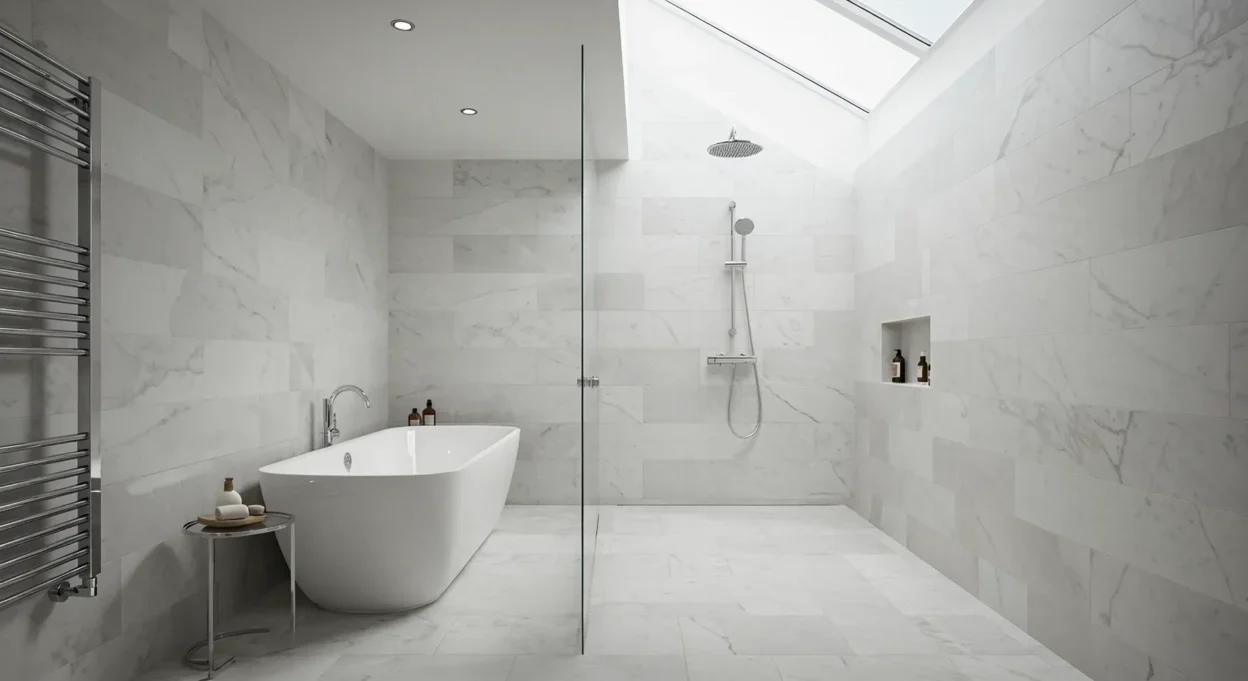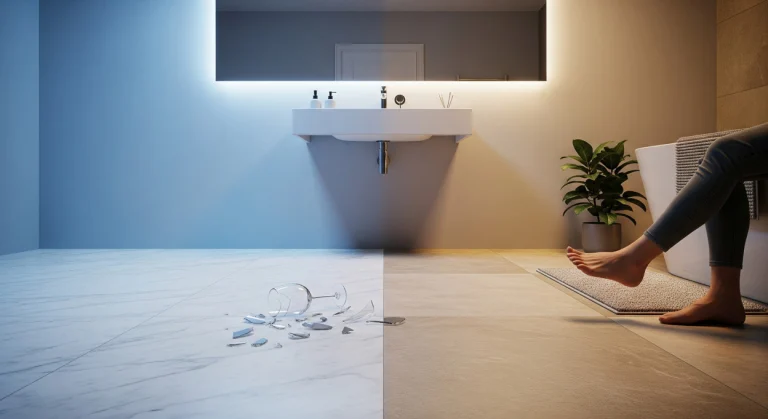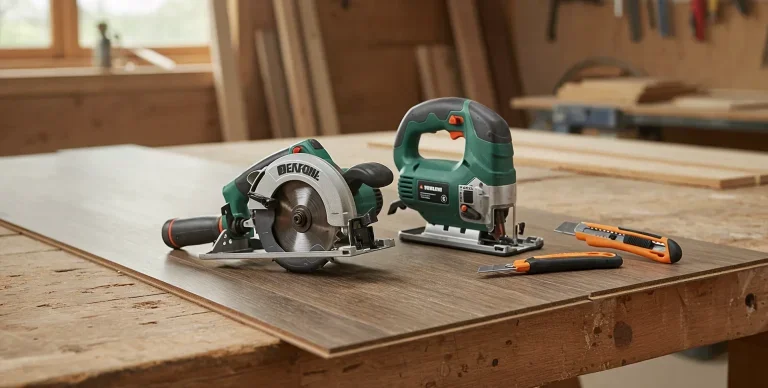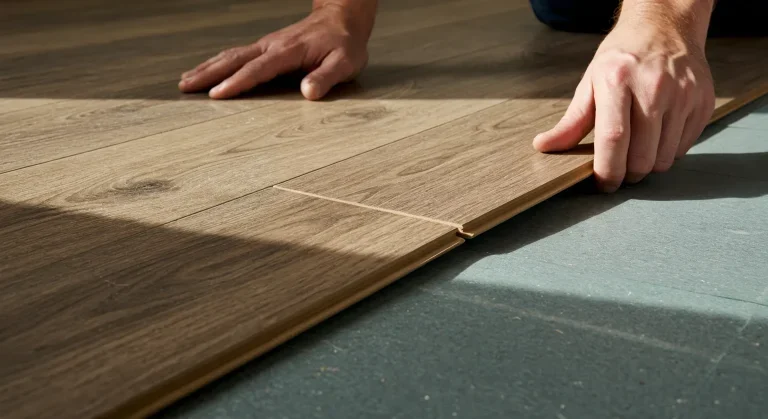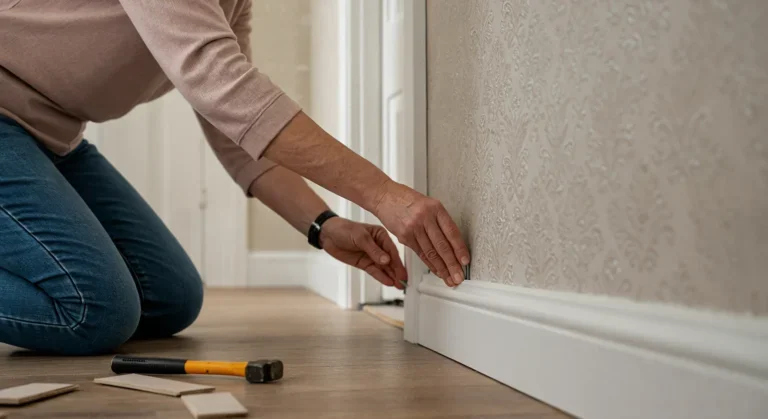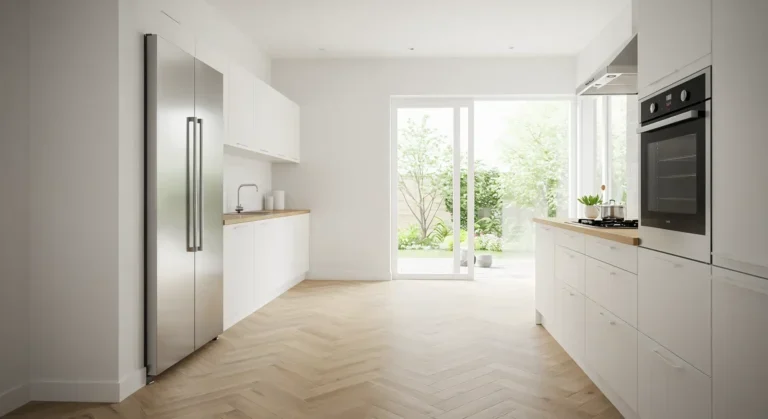The modern wet room represents the pinnacle of sleek, accessible, and luxurious bathroomdesign. By removing the traditional shower tray and enclosure, a wet room creates a seamless, open-plan space that is both stylish and incredibly practical. However, the success of this design hinges entirely on one critical element: the wet room flooring. This is no ordinary floor; it’s the foundation of a fully waterproofed system that must be completely impervious to water, safe underfoot, and durable enough to last for years.
Choosing the right wet room flooring can feel like a high-stakes decision. What materials are truly up to the job? What is “tanking,” and why is it so important? And how can you achieve a stunning look without compromising on safety? This ultimate UK guide for 2025 will walk you through the best wet room flooring options, from ultra-practical safety vinyl to stylish porcelain tiles, explaining the pros, cons, essential installation secrets, and design ideas to help you create your perfect wet room.
Jump to Section:
- What Defines a Wet Room Floor? Beyond Just Being Waterproof
- The Non-Negotiables: Essential Qualities for Wet Room Flooring
- Best Material Ideas for UK Wet Room Flooring (2025)
- The Secret to Success: Understanding Wet Room Waterproofing (Tanking)
- UK Wet Room Flooring Ideas & Style Trends for 2025
- Installation is Critical: Why a Professional Fitter is Essential
- Simple Steps for Maintaining Your Wet Room Floor
- Understanding Wet Room Flooring Costs in the UK
- The Verdict: Choosing the Right Floor for Your Dream Wet Room
What Defines a Wet Room Floor? Beyond Just Being Waterproof
A wet room is a bathroom that has been fully waterproofed, or “tanked,” allowing the entire space to effectively act as a shower enclosure. The floor is designed with a slight, built-in gradient or fall, which directs all water towards a drain. This means the wet room flooring you choose is part of an integrated system. It’s not just about selecting a waterproof material; it’s about ensuring that material works as the final decorative and protective layer of a professionally constructed, watertight environment.
The Non-Negotiables: Essential Qualities for Wet Room Flooring
When selecting wet room flooring, there are several non-negotiable properties it must have:
- 100% Waterproof: The material itself must be completely impervious to water. “Water-resistant” is not enough for the constant saturation of a wet room.
- High Slip Resistance: This is a crucial safety requirement. A wet, soapy floor is inherently slippery. The best wet room flooring has a textured surface or a certified slip-resistance rating (an R-rating) to provide secure grip. Aim for R10 or higher.
- Durability & Hygiene: The floor must be tough enough to withstand daily use and frequent cleaning with bathroom-safe products. It should be non-porous to prevent the growth of mould and mildew.
- Installation Compatibility: The material must be suitable for laying on a gradient and forming a continuous, sealed surface.
- Underfloor Heating (UFH) Compatibility: Given that wet rooms often feature tiles, UFH is a highly recommended addition for comfort in UK homes. Ensure your chosen flooring is compatible.
Best Material Ideas for UK Wet Room Flooring (2025)
Here are the top material choices that meet the demanding requirements of a wet room environment.
Safety Vinyl: The Ultimate in Practicality and Grip
Often considered the most reliable and practical choice, especially in commercial settings but increasingly popular residentially.
- Why it Works: This is not standard sheet vinyl. Safety vinyl, from leading UK brands like Altro and Polyflor, is specifically engineered with aggregate particles (like quartz or aluminium oxide) embedded in the material to provide exceptional, lasting slip resistance (often R10-R12). It is installed in a single sheet, meaning no or very few seams. For total waterproofing, it can be “capped and coved” – meaning the vinyl continues up the wall for a short distance, creating a seamless, tank-like finish.
- Style Ideas: While traditionally functional, modern safety vinyl comes in a wide range of colours, including subtle stone effects, wood looks, and contemporary speckled or plain designs.
Porcelain & Ceramic Tiles: For Seamless Style and Durability
Tiles are the most popular aesthetic choice for creating a luxurious, spa-like wet room.
- Why it Works: The surface of porcelain and ceramic tiles is completely waterproof and extremely durable. The design possibilities are virtually endless.
- Key Consideration – Grout: The tiles themselves are waterproof, but the grout lines are the system’s potential weak point. It is essential to use a high-quality, flexible, waterproof, and mould-resistant grout (epoxy grout is a superior choice for wet rooms) to prevent leaks and cracking.
- Style Ideas: Large format porcelain tiles create a seamless, minimalist look with fewer grout lines. Mosaic tiles are an excellent idea for the direct shower area, as the higher number of grout lines naturally adds more grip underfoot.
Luxury Vinyl Tile (LVT): A Stylish Contender (with important caveats)
LVT offers the stunning realism of wood or stone with the practical benefits of vinyl.
- Why it Works (with caveats): LVT is waterproof, warm underfoot, and available in beautiful designs. However, for a true wet room environment, standard “click” LVT is generally not recommended as the numerous unsealed joints can pose a risk.
- The Correct Method:Glue-down LVT is the strongly recommended option. A professional installer will fully bond the tiles to the perfectly prepared and tanked subfloor, creating a more secure and sealed surface than a floating click floor.
- Style Ideas: Perfect for achieving a warm, natural wood-plank look for a spa-like feel, or a realistic slate or marble effect without the coldness of real stone.
Natural Stone & Specialist Finishes: Premium & Specialist Choices
- Natural Stone (e.g., Slate, Granite): Offers unique, high-end beauty. However, it is often porous and must be sealed correctly and regularly to prevent water absorption and staining. It’s a very expensive option requiring specialist installation.
- Microcement/Resin: A specialist option that creates a completely seamless, grout-free, industrial-style floor. It requires application by trained professionals but results in a modern, waterproof, and durable surface.
The Secret to Success: Understanding Wet Room Waterproofing (Tanking)
This is the most critical part of any wet room installation. The decorative flooring you see is only the final layer; the real waterproof protection comes from what’s underneath.
“Tanking” is the process of creating a completely waterproof membrane across the entire subfloor and up the walls in the shower area before any tiles or vinyl are laid. This is done in two main ways:
- Liquid Membrane: A paint-on liquid that cures to form a flexible, seamless waterproof layer. Multiple coats are applied, often with reinforcing tape in corners and joints.
- Sheet Membrane: A waterproof membrane, like a heavy-duty sheet, is laid down and sealed at the joints.
A pre-formed shower tray can also be installed flush with the floor, which already has the correct gradient built-in, before the tanking membrane is applied over it and the rest of the floor. This entire process, including setting the correct gradient for drainage, is a technical job best left to experienced professionals.
UK Wet Room Flooring Ideas & Style Trends for 2025
- The Seamless Spa: A huge trend is using the same large format tile on both the floor and walls. This blurs the lines and creates an incredibly spacious, cohesive, and luxurious feel.
- Natural Textures: Bring the outside in with flooring that mimics natural materials. Textured stone-effect porcelain or realistic wood-look LVT are perfect for creating a calming, organic sanctuary.
- Zoning with Tiles: Use a different tile for the main shower area. For example, large format tiles on the main floor and coordinating small mosaics in the shower area. The mosaics not only define the space but the extra grout lines provide added slip resistance.
- Accessibility by Design: A key benefit of a wet room is the level-access, trip-free shower entry. This is a stylish design choice that also future-proofs the home, making it accessible for all ages and mobility levels.
Installation is Critical: Why a Professional Fitter is Essential
While many flooring projects are DIY-friendly, a true wet room is not one of them. The technical skill required to:
- Create the correct subfloor gradient (fall) for effective drainage.
- Correctly install the drain.
- Apply the tanking membrane perfectly to create a 100% waterproof seal.
- Lay the final flooring material with waterproof grout/adhesives and perfect sealing… …means that professional installation is essential to prevent catastrophic leaks and water damage.
Simple Steps for Maintaining Your Wet Room Floor
- Squeegee After Use: Use a floor squeegee to direct excess water towards the drain after showering. This helps the floor dry faster and reduces soap scum/limescale build-up.
- Regular Cleaning: Clean the floor regularly with a pH-neutral bathroom cleaner to prevent residue build-up.
- Check Sealant: Periodically check the silicone sealant around fixtures and the room perimeter to ensure it’s intact and free from mould.
Understanding Wet Room Flooring Costs in the UK
Creating a wet room is more expensive than a standard bathroom renovation due to the extensive waterproofing work.
Full Installation Cost:
The total cost for a professionally installed wet room in the UK, including the subfloor formation, tanking, plumbing, and fitting of the final flooring, can be significant. Expect overall project costs to be higher than a standard bathroom fit-out.
Flooring Materials:
On top of the installation, material costs for suitable flooring vary:
- Safety Vinyl: Approx. £25-£50+ per m².
- Porcelain/Ceramic Tiles: Approx. £20-£60+ per m².
- LVT (Glue-Down): Approx. £20-£60+ per m².
- Always get detailed quotes that separate labour for tanking/preparation and final floor fitting.
The Verdict: Choosing the Right Floor for Your Dream Wet Room
The best wet room flooring is one that provides uncompromising safety and waterproof performance without sacrificing style. For most UK homeowners in 2025, porcelain tiles (with epoxy grout) and high-quality safety vinyl represent the top choices for achieving this balance. Glue-down LVT offers a fantastic way to bring realistic wood and stone looks into the space but requires meticulous installation.
Ultimately, the most important decision is not just the material you see on top, but investing in the professional “tanking” system beneath it. By choosing a suitable waterproof and slip-resistant surface and ensuring it’s installed by an experienced professional, you can create a beautiful, accessible, and worry-free wet room that adds value and luxury to your home.

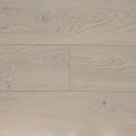 Light
Light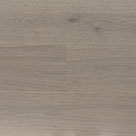 Grey
Grey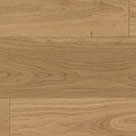 Natural
Natural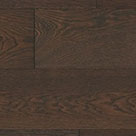 Dark
Dark White
White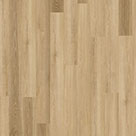 Light
Light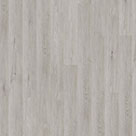 Grey
Grey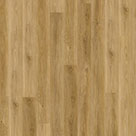 Natural
Natural Dark
Dark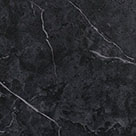 Black
Black